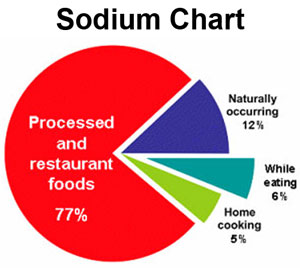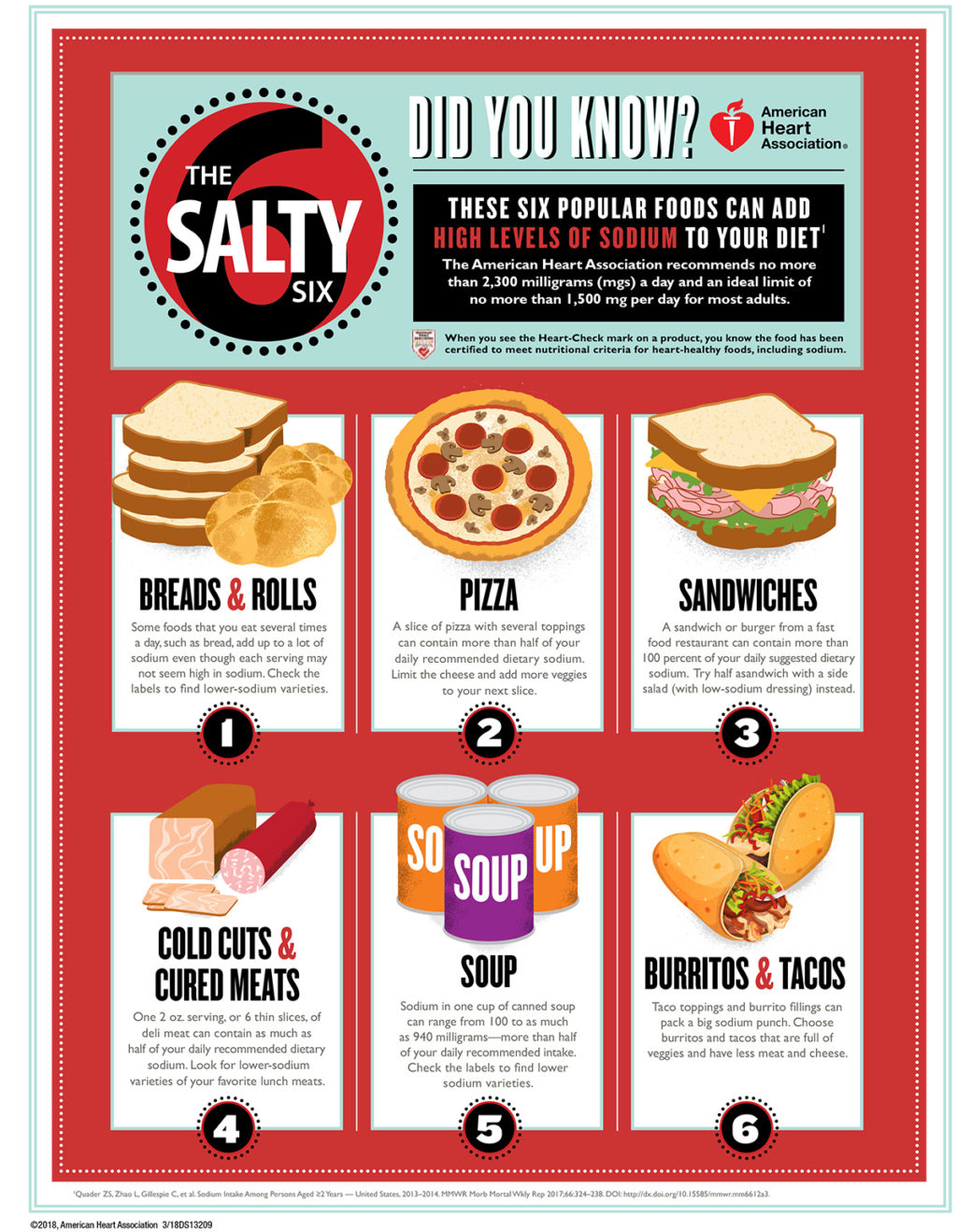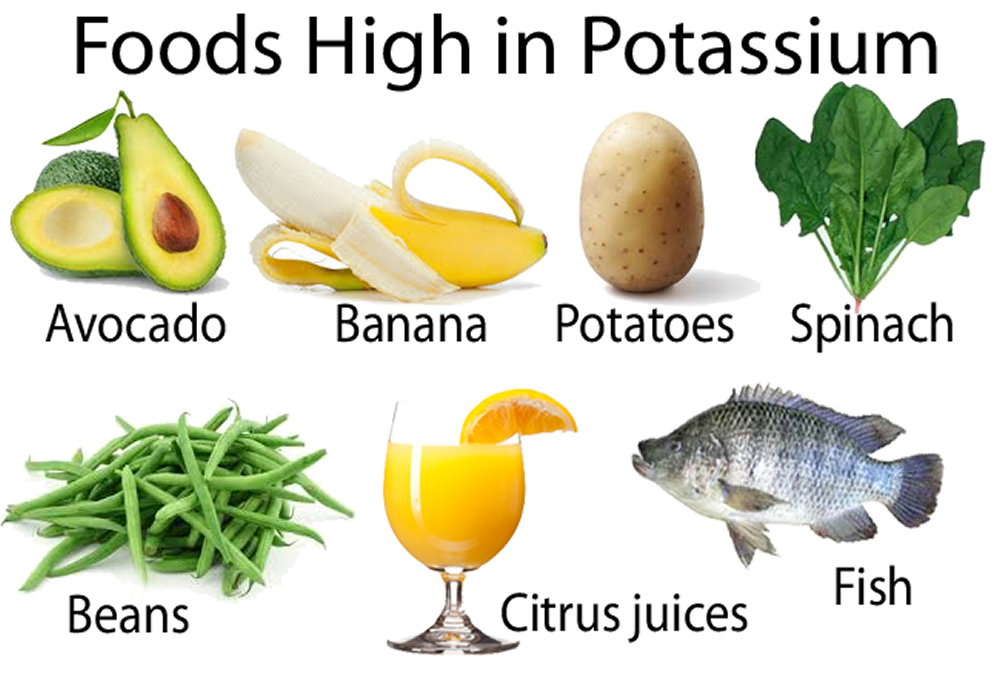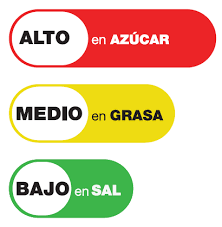Reading beyond the headlines: Is more salt really better for you?
Has the scientific world been turned on its head? Health experts have long linked high-sodium diets to a significant risk for heart  disease, hypertension, and stroke, but has a single study uncovered the “truth about salt?” Let’s read beyond the headlines.
disease, hypertension, and stroke, but has a single study uncovered the “truth about salt?” Let’s read beyond the headlines.
The World Health Organization, based on peer-reviewed research and in concert with health experts throughout the world, writes that an estimated 2.5 million deaths could be prevented yearly if global salt consumption were limited to the recommended 2,000 mg daily. Where cultures have adopted the Standard American Diet (SAD), the number one cause of death is consistently heart disease and stroke. And here in Ecuador, it is no different. Hypertension and cardiovascular disease affect up to 40 percent of adults in Latin America and the Caribbean, with estimates up to 50 percent who are undiagnosed and untreated.
But a recent study published in the journal The Lancet has produced media headlines questioning the dietary sodium recommendations. Andrew Mente, Ph.D. and associates contend that this level of sodium intake is unnecessarily restrictive, and only extremely high salt diets, more than 5 grams (5,000 mg) daily, are linked to heart disease.
Obviously, there is a discrepancy. But this is only one study, and the Independent (UK) reports, “The study was strongly criticized by other scientists with one eminent expert expressing “disbelief” that “such bad science” should be published by The Lancet.”
So, what is the truth behind the headlines such as “Salt not as damaging to health as previously thought?”
First: What’s your Na+ IQ?
- True or False: Salt and sodium are the same.
- The minimum amount of sodium for most adults to stay healthy is 500 mg. Most Americans (and consumers of Western diets) consume on average per day:
More than 3,500 mg
More than 2,300 mg
About 1,500 mg
Less than 1,000 mg - Manufacturers use salt in foods as a:
Preservative
Flavor-enhancer
Binder
Color enhancer
All of the above. - Excess sodium in the blood can lead to high blood pressure because:
Sodium decreases blood volume
Sodium increases blood volume - Most of the salt in our diet comes from:
What we add during cooking
From the salt shaker
From processed foods
Naturally found in certain foods
Answers:
- Salt and sodium are not exactly the same thing. Salt is composed of two minerals sodium (Na) and chloride (Cl), also known as table salt, consisting of about 40 percent sodium and 60 percent chloride. On the nutrition facts food label, “sodium” is listed because the sodium portion of the salt is what’s relevant for health.

- According to the World Health Organization, most people consume on average 3,600 mg – 4,800 mg of sodium daily (9-12 grams of salt), more than double the recommended maximum intake.
- Manufacturers add salt to foods for all of the reasons mentioned. According to the Centers for Disease Control (CDC) more than 40 percent of the sodium we eat daily comes from only 10 types of foods! The top sources are:
- Breads and rolls
- Pizza
- Sandwiches
- Cold cuts and cured meats
- Soups
- Savory snacks*
- Chicken
- Cheese
- Eggs and omelets
*Chips, popcorn, pretzels, snack mixes, and crackers. - Medications including antacids (sodium bicarbonate) are often hidden sources of added sodium.
- Sodium increases blood volume. Excessive serum (blood) sodium attracts and retains water, increasing the blood volume. This makes the heart pump harder to circulate the increased volume of blood around the body, increasing strain on blood vessels and boosting blood pressure to unhealthful levels.
- Most of the salt in our diet comes from processed foods. Only 15 percent of the salt we consume is added during cooking or at the table. Only 10 percent occurs naturally in food. Many processed foods may not “taste” salty: bread, breakfast cereals, and bakery products contribute a lot of sodium.

Potassium — a critical ingredient for good health
The WHO emphasizes that we are not consuming sufficient potassium, and this enhances the negative effects of excess sodium. People who eat a lot of salt and very little potassium are more than twice as likely to die from a heart attack as those who ate about equal amounts of both nutrients. Potassium regulates fluid balance and the electrical activity of the heart and other muscles. Low potassium intake is linked to high blood pressure and heart disease.
And we’re slackers! Consumers of the SAD don’t get even close to eating the recommended 4,700 mg of potassium a day — less than two percent of people in the U.S. achieve this intake.
It is easy to eat more potassium! The main source of dietary potassium is from fruits and vegetables.
Diets high in natural sources of potassium are associated with better blood pressure control. In the DASH (Dietary Approaches to Stop Hypertension) diet trials, participants with high blood pressure who consumed an average of eight to 10 total servings of fresh fruits and vegetables per day experienced significant drops in their blood pressure level. Of note: as noted in Harvard Health: Potassium carries a caveat. For people with kidney problems, loading up on potassium may do harm. Do not take potassium supplements without consulting with your doctor: overly high blood levels of potassium can lead to dangerous irregular heart rhythms.
Where is the Potassium in Your Diet?
When you think “potassium”, do you think “banana”? Bananas are good sources of potassium – about 422 mg in a medium-sized one, however, there are plenty of other sources, readily available at mercados and supermercados all around Cuenca.

High-potassium foods include:
White beans (829 mg of potassium per cup or 18 percent of the recommended daily intake) and legumes (760 mg). Both are also a very good source of fiber, thiamine, folate, iron, magnesium, and manganese.
Potatoes and sweet potatoes: Much of the potassium is found in the skin, so scrub and bake or roast. Potatoes are also a good source of vitamins C, B6, and manganese.
Beets: Besides potassium, beets are also rich in folate and manganese. Beet’s red pigment acts as a potent antioxidant.
Parsnips: A white root vegetable like carrots, parsnips are rich in potassium and vitamin C and folate too.
Spinach and Swiss chard: Both are potent sources of vitamins A, K, and minerals calcium and manganese.
Tomatoes and more: Tomatoes and tomato sauce and paste are good sources of potassium, vitamins A, C, E, B6, and copper. Tomatoes are rich in lycopene, an antioxidant. Check out this easy tomato sauce recipe from TheKitchn.com.
Oranges and orange juice: Also rich in vitamin C, one whole orange has 179 mg of potassium and a cup of juice 496 mg.
Bananas: A medium banana has 422 mg of potassium, or 12 percent of the RDI and provides a good source of vitamins C, B6, minerals manganese and magnesium. Bananas are high in fiber (like most whole fruit) and antioxidants.
Other good potassium sources are nuts (180 mg per oz.), cabbage (167 mg per cup raw) and fruits such as papaya (one cup of 1” pieces has 264 mg). A cup of unsweetened coconut water (so freely available throughout Ecuador) has 600 mg. Read more about potassium in the World’s Healthiest Foods here.
Beyond the headlines
We need sodium! The sodium part of salt is absolutely essential — it’s an electrolyte that plays many important roles in our body’s chemistry — in water retention, muscle contraction, and enzyme activation, for starters.
However global consumption is staggeringly high. Excessive sodium in the diet can boost blood pressure into the unhealthy range, and lead to strokes, heart attacks, kidney disease, stomach cancer, osteoporosis, and other conditions.
Of course, it is possible to be deficient in sodium, but it’s highly unlikely. If you work out regularly and perspire profusely, and your diet consists of whole, fresh foods … and you are not supplementing with an electrolyte-rich beverage, it’s possible to consume less sodium than you’re excreting. Some extreme athletes like marathoners can lose from 700 to 1,600 milligrams of sodium in just an hour!
Which is why competitive athletes and sports teams typically have a Registered Dietitian/Nutritionist with advanced training in sports nutrition on staff. The Commission on Dietetic Registration awards a Board Certification in Sports Dietetics (CSDD). CSDDs are experts that provide effective and evidence-based nutrition services for health, fitness, and athletic performance.
Regarding the headlines, it’s important to read beyond them. Even the lead author of the study questioning current recommendations for 2,000 mg advises that we should “proceed with caution.” Rather than focusing on sodium, Dr. Mente says we should, “… focus on improving the overall quality of the diet and get people to eat more potassium-rich foods like fruits and vegetables, dairy, potatoes, beans, nuts — that stuff.”
‘Nuff said.
Take it with a grain of salt! Take charge of your diet.
Take charge of your ingredients — if you’re not making it, it’s salted.
Processed and restaurant foods supply 75 percent of the sodium in most people’s diets. A good example is a commercial pizza — just two slices of Papa John’s Original Crust Pizza with Cheese has 1520 mg of sodium, 64% of your daily recommended value (DV) for sodium. Why so high? The dough, the cheese, and the canned tomato sauce are all made with a lot of salt.
It doesn’t take too long and it’s not complicated to make your own. You don’t need a special mixer, or a special oven, or even a special pan. Write to me for the recipe … I’m happy to share. susanthedietitian@gmail.com That’s “dietitian” spelled with two ‘t’s.
Be a label sleuth — all packaged foods carry a Nutrition Facts panel and list sodium per serving in milligrams (mg). Make high-sodium foods an occasional treat, and balance with fresh for flavor and health.
Ecuador packages carry “traffic light” symbols on the front of the package — alta en sodio means high in sodium. Baking soda, “soda”, sodium bicarbonate, sodium nitrate, monosodium glutamate, or Na all indicate added sodium.

“Traffic light” food labels – Alto (High), Medio (Medium), Bajo (low)
Fresh is best: Focus on naturally low-sodium, rich-in-potassium fresh fruits and vegetables, beans, and legumes. If using canned, drain and rinse to eliminate extra salt — a good idea for all canned foods. Fresh meats and fish contain little sodium. Dairy contains some sodium naturally, and cheese can have lots of added salt, but in the context of a menu full of other fresh foods, these foods fit.
Taste your food first. Are you the type who salts before tasting? Salt is an acquired taste and to overcome your expectations, it takes a deliberate effort. The more frequently you eat salted food, the more you expect it. Start by reducing packaged and restaurant foods. Cook with less salt. Increase the flavor of food with herbs and spices, vinegar and lemon juice. And taste the food before seasoning, then use high quality, highly flavored sea salt or other unrefined salts, just to flavor.
Susan Burke March, a Cuenca expat, is a Registered Dietitian/Nutritionist and a Certified Diabetes Educator who specializes in smart solutions for weight loss and diabetes-related weight management. She is the author of Making Weight Control Second Nature: Living Thin Naturally — a fun and informative book intended to liberate serial dieters and make healthy living and weight control both possible and instinctual over the long term. Contact her at SusantheDietitian@gmail.com
Sources:
CDC.gov. Top 10 Sources of Sodium
Harvard Health. (Health.Harvard.edu) Potassium lowers blood pressure.
Healthline.com. 14 healthy foods that are high in potassium.
Independent.co.uk. Lancet attacked for publishing study claiming a low-salt diet could kill you.
TCTMD.com. Faulting salt? New PURE analysis argues against low sodium intake.
The World’s Healthiest Foods. Potassium.
World Action On Salt and Health. Salt in the News 2018
World Health Organization. Salt Reduction.





















